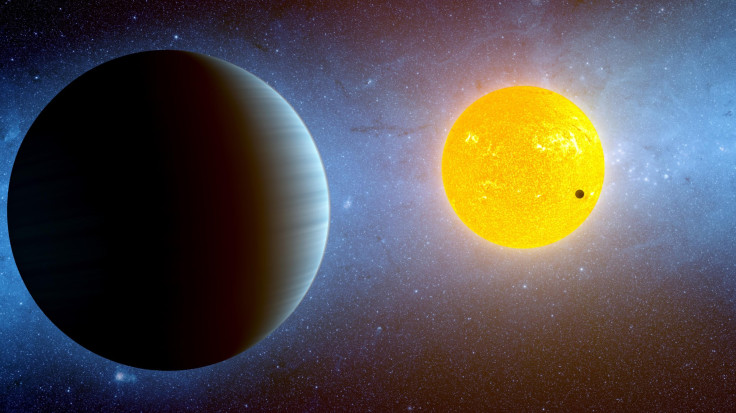WASP-127b: Exoplanet With Clear Metal-Rich Skies Might Have Traces Of Water

An international team of astronomers detected "fingerprints" of metals in the atmosphere of an exoplanet for the first time as well as possible signs of water, a find that could bolster the search for life beyond Earth.
Sitting 332 light years away from Earth, WASP-127b is one of the least dense gas giant exoplanets ever discovered, a feature which makes it unique among thousands of extra-solar worlds cataloged to date. Though it’s nearly one and a half times bigger than Jupiter, our Solar System’s largest planet, the mass of the alien world is not even half of what Jupiter has on offer.
More importantly, the exoplanet takes a little over four days to complete a single orbit of its host star and is heated to temperatures of up to 1,127 degrees Celsius (2060.6 degrees Fahrenheit). The characteristic makes this world one hell of a place to live, but, despite knowing this since the planet’s discovery in 2016, a team of researchers from the University of Cambridge and the Instituto de Astrofísica de Canarias (IAC) used it as a subject of study while using the Gran Telescopio Canarias, a reflecting telescope in Spain.
The team observed the atmospheric composition of the exoplanet and detected fingerprints signaling a high concentration of alkali metals, mainly sodium, potassium, and lithium. The discovery, a first on an exoplanet, and some modeling work also helped the team determine that the skies of the planet are partly clear.
“The detection of a trace element such as lithium in a planetary atmosphere is a major breakthrough and motivates new follow-up observations and detailed theoretical modeling to corroborate the findings,” study co-author Nikku Madhusudhan said in a statement. The team believes the discovery of lithium could provide critical insight into the formation of the planet and the evolution of the WASP-127 system. Even the star of the planet, WASP-127, is rich in lithium, which suggests it could be a red giant, thousands of times bigger than the Sun, or a supernova.
“The particular characteristics of this planet allowed us to perform a detailed study of its rich atmospheric composition,” study’s first author Guo Chen said in the statement.
But that’s not it. Along with traces of metal in the atmosphere, the team also found possible signs of water, which, if confirmed, could mean a major breakthrough in the field of astronomy. “While this detection is not statistically significant, as water features are weak in the visible range, our data indicate that additional observations in the near-infrared should be able to detect it,” co-author Enric Pallé said of the possible discovery of water.
The team adds that further observations from James Webb Space Telescope, NASA’s successor to the Hubble, should be able to take a close look at the atmosphere of WASP-127b and reveal more about the low-density gas giant and its characteristics.
The study titled, “The GTC exoplanet transit spectroscopy survey IX. Detection of Haze, Na, K, and Li in the super-Neptune WASP-127b,” will be published in the journal Astronomy and Astrophysics and an arXiv preprint is available online.
© Copyright IBTimes 2024. All rights reserved.





















